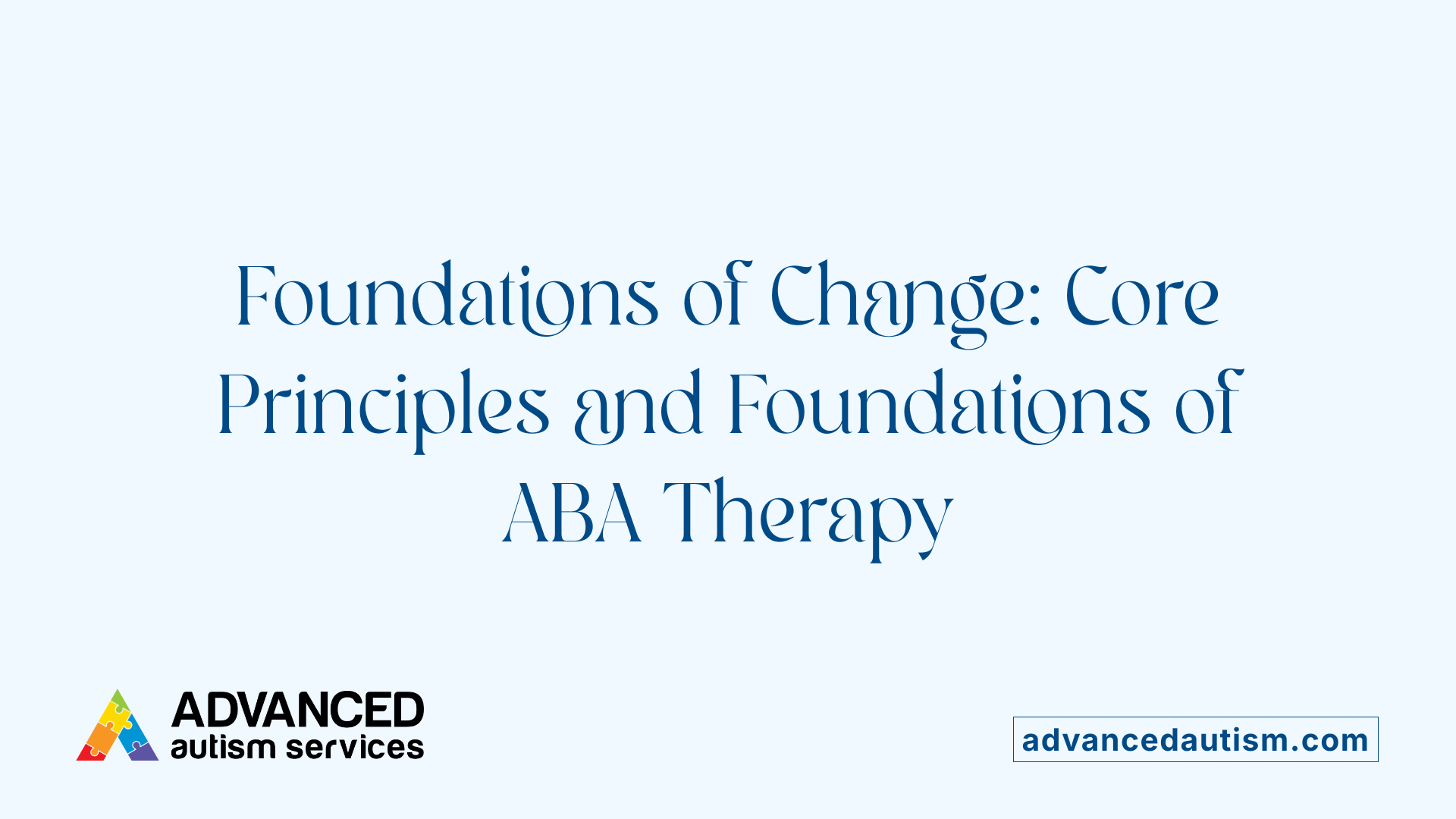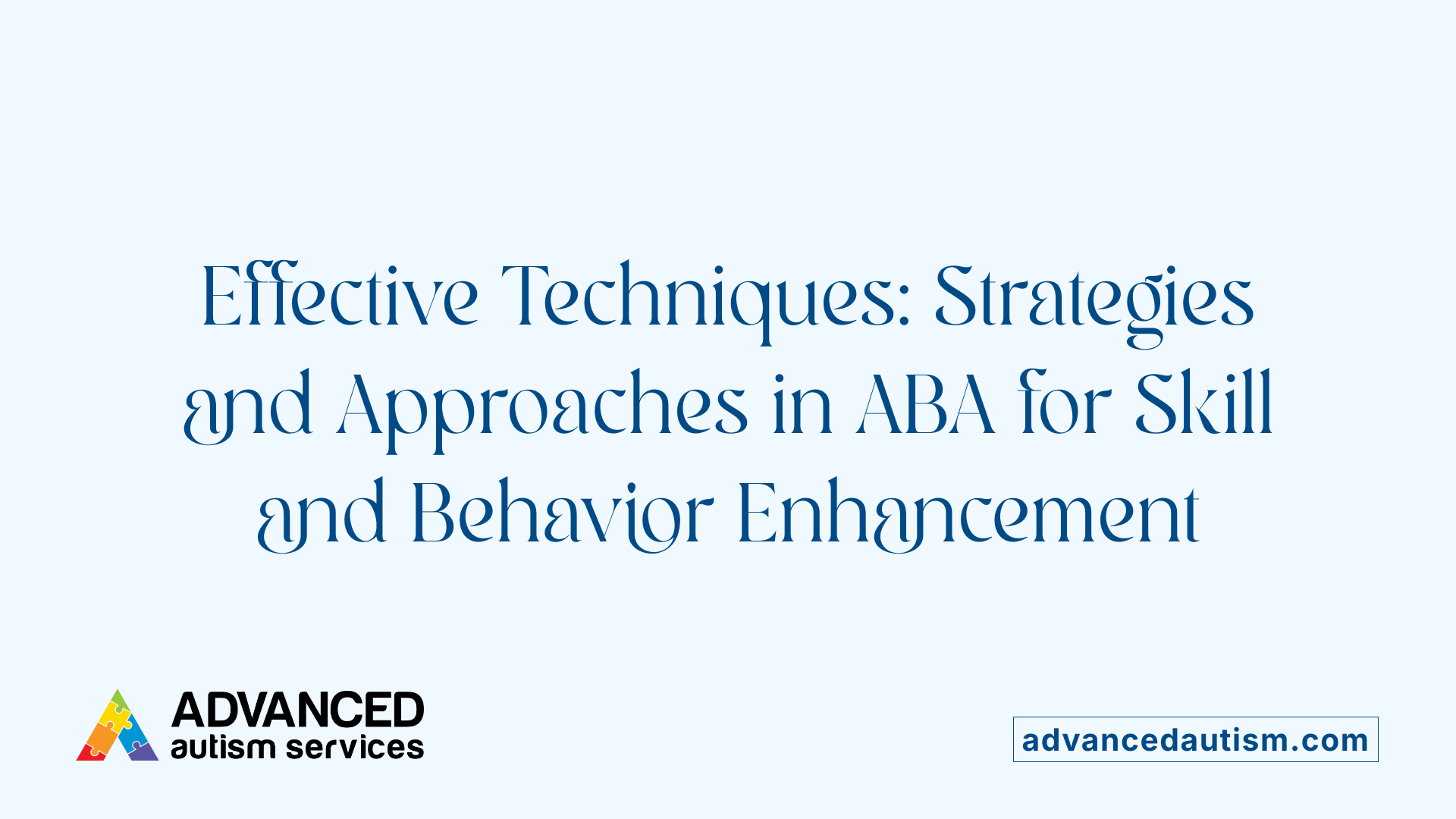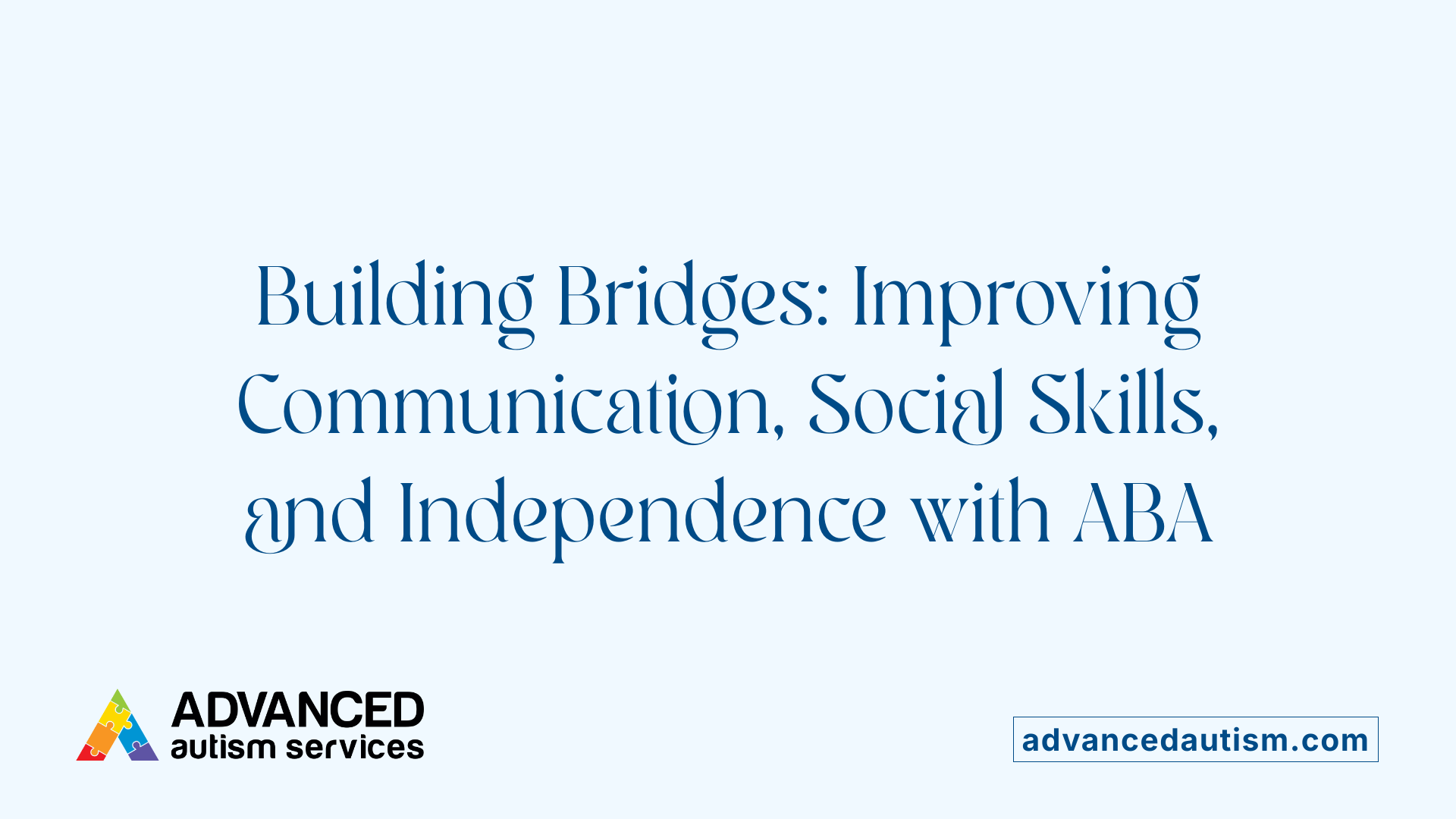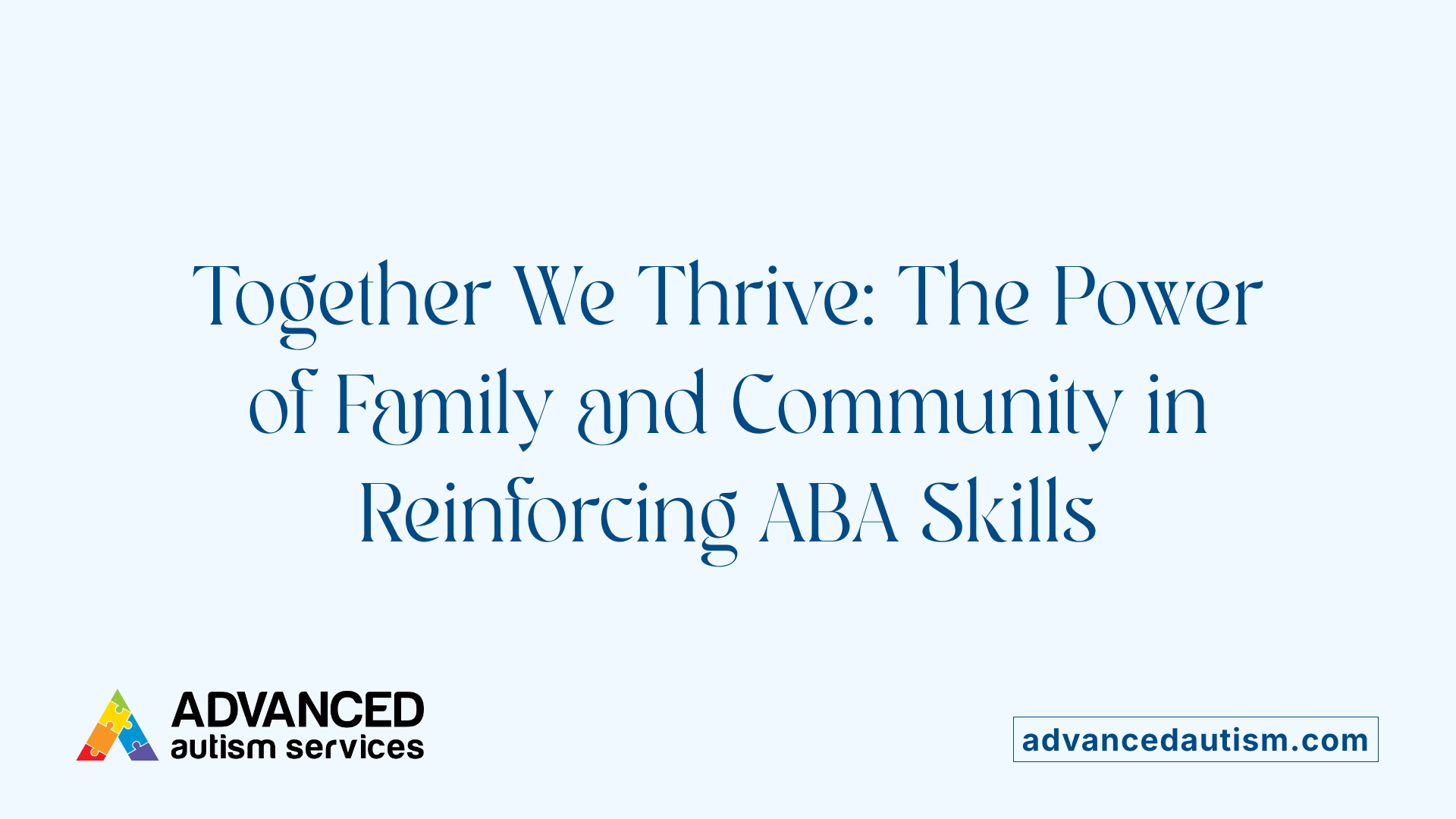Understanding Behavioral Challenges and Effective Solutions
Addressing challenging behaviors in individuals with autism spectrum disorder (ASD) is crucial for improving their quality of life. Applied Behavior Analysis (ABA) therapy is a scientifically supported approach that offers numerous benefits by focusing on behavior modification, skill development, and enhancing communication and social skills. This article explores how ABA therapy works, its positive impacts, and the strategies employed to foster meaningful change.
Core Principles and Foundations of ABA Therapy

What are the benefits of ABA therapy in managing challenging behaviors?
ABA therapy offers numerous benefits in managing challenging behaviors. It is particularly effective in reducing problematic behaviors such as tantrums, aggression, and self-injury. By understanding the causes of these behaviors through functional assessments, therapists develop personalized strategies that encourage alternative, more appropriate responses using positive reinforcement.
One of the main advantages of ABA therapy is its focus on enhancing communication skills. It teaches children how to express their needs effectively and respond to social cues, which significantly improves their social interactions and peer relationships.
ABA also plays a vital role in developing essential life and academic skills. By breaking down complex tasks into smaller, manageable steps, it fosters independence and boosts confidence. The systematic approach helps children succeed in various environments, whether at school, home, or in the community.
Another important benefit is the development of self-regulation and emotional coping strategies. Children learn to recognize emotional triggers and manage their stress more effectively.
Overall, ABA provides a structured, tailored approach that supports behavioral improvements, skill acquisition, and enhances overall quality of life for individuals with autism and developmental challenges.
Strategies and Techniques in ABA for Skill Building and Behavior Reduction

What strategies and approaches are used in ABA therapy to improve behavior and skills?
Applied Behavior Analysis (ABA) therapy employs a range of evidence-based techniques rooted in behavioral science. The goal is to help individuals develop new skills and modify challenging behaviors effectively.
A fundamental strategy is positive reinforcement. When a desired behavior occurs, a therapist provides a rewarding stimulus—such as praise, tokens, or preferred activities—to increase the likelihood of the behavior occurring again. This reinforcement is tailored to what motivates each individual.
Prompting and fading are also essential tools. Prompting involves giving cues or assistance to encourage a behavior, such as guiding a child’s hand to write. Fading gradually decreases the prompts to promote independent skill performance.
Modeling and chaining techniques support skill acquisition. In modeling, the therapist demonstrates a behavior for the individual to imitate. Chaining involves breaking down complex tasks into smaller steps, teaching each part in sequence—known as task analysis—and then linking them together into a complete activity.
Functional communication training teaches individuals to express their needs appropriately, reducing frustration and problematic behaviors. It involves teaching alternative communication methods like sign language, picture exchange communication systems (PECS), or verbal requests.
The ABC model—Antecedent, Behavior, Consequence—is pivotal in analyzing behaviors. By understanding an antecedent trigger and the resulting consequence, therapists can develop tailored strategies to encourage positive behaviors while reducing problematic ones.
In addition to direct interventions, techniques like visual supports, natural environment teaching, and incidental learning facilitate the generalization of skills across different settings and situations. Data collection during therapy sessions helps monitor progress and adjust strategies to ensure continued improvement.
Structured methods such as discrete trial training and pivotal response training are used to teach specific skills systematically. These approaches promote skill mastery and independence.
Overall, ABA's combination of these strategies and approaches allows for personalized, adaptable interventions that address each individual's unique needs, promoting meaningful learning and behavior change.
Enhancing Communication, Social Skills, and Independence

How does ABA therapy help enhance communication, social skills, and independence?
ABA therapy plays a vital role in supporting children with autism to develop essential skills in communication, social interaction, and daily independence. By using tailored, evidence-based teaching strategies, ABA addresses individual needs to foster meaningful progress.
To improve communication, ABA incorporates various methods such as augmentative and alternative communication (AAC) devices, Picture Exchange Communication System (PECS), sign language, and communication boards. These tools provide children with functional ways to express their needs and wants, reducing frustration and increasing understanding.
In addition to communication, ABA targets social skills like eye contact, turn-taking, sharing, and initiating conversations. Therapists utilize techniques such as positive reinforcement, modeling, and role-playing to break down complex social behaviors into small, manageable steps. This structured approach helps children practice and master social cues, which are critical for building peer relationships and participating in group settings.
Creating opportunities for children to practice skills in natural settings is a core component of ABA. Naturalistic teaching strategies simulate real-life interactions, encouraging children to generalize learned skills across different environments and people.
Promotion of independence is a central goal in ABA therapy. Therapists work on daily living skills such as self-care, dressing, grooming, and simple household tasks. These skills are taught through task analysis—breaking down activities into smaller steps—and reinforced with positive encouragement to foster confidence and autonomy.
The involvement of family members is crucial. Training parents and caregivers ensures that learned skills are consistently reinforced outside therapy sessions. This collaborative approach helps sustain progress over time and enhances the child's ability to function independently.
Overall, ABA therapy addresses multiple developmental domains, making significant improvements in communication, social interaction, and independence. This holistic approach promotes greater inclusion, better quality of life, and meaningful participation in community and family activities.
| Aspect | Techniques Used | Goals and Outcomes |
|---|---|---|
| Communication | PECS, sign language, AAC devices, modeling | Express needs, reduce frustration, increase understanding |
| Social Skills | Role-playing, naturalistic teaching, social stories | Eye contact, turn-taking, initiating conversations |
| Independence | Task analysis, reinforcement, natural environment teaching | Daily living skills, self-care, community participation |
| Family Involvement | Parent training, home practice, collaborative planning | Skill maintenance, generalization, reinforcement |
By combining these targeted interventions, ABA therapy supports children in achieving meaningful, practical skills for everyday life, setting the foundation for lifelong success and inclusion.
The Role of Family and Community in Reinforcing Skills

What positive impacts does ABA therapy have on individuals with autism spectrum disorder?
ABA therapy offers numerous benefits for individuals diagnosed with autism spectrum disorder (ASD). It significantly enhances communication skills, social interactions, and adaptive behaviors necessary for daily life.
One of the most notable effects is the increase in helpful behaviors such as language development, attention span, and independence. Simultaneously, ABA strategies help reduce problematic behaviors like tantrums, aggression, and self-injury by understanding their underlying functions and replacing them with functional, appropriate responses.
Research consistently supports that intensive ABA interventions can foster meaningful improvements across various domains. These include cognitive skills, daily living tasks, and social participation, often leading to long-term success.
The approach is highly personalized, tailoring interventions to each individual's unique needs. Family involvement is central to the therapy's effectiveness; families are trained to reinforce skills at home and in community settings, ensuring consistency and generalization of learned behaviors.
Moreover, ABA's structured techniques, such as positive reinforcement and systematic teaching, empower individuals to achieve greater independence and improve their overall quality of life.
How do family involvement and training support ABA strategies?
Family involvement is a cornerstone of successful ABA therapy. Families receive training on how to implement reinforcement strategies, communicate effectively, and support skill generalization outside therapy sessions. This collaboration ensures that behavioral progress extends into daily routines, increasing overall effectiveness.
Involving family members also helps identify individual triggers and preferences, allowing for more personalized and motivating interventions. Regular communication between therapists and families fosters consistency and reinforces learning, which is vital for meaningful behavioral change.
How can reinforcement strategies be applied at home and in community settings?
Reinforcing skills at home involves using positive reinforcement techniques such as praise, tokens, or preferred activities to encourage desired behaviors. For example, a child might receive a favorite activity for completing a task or using functional communication effectively.
In community settings, reinforcement extends to schools, recreational activities, and social groups. This consistency helps children generalize skills across different environments, promoting real-world success. Educators and community members trained in ABA principles can support this process by providing appropriate reinforcement and ensuring behaviors are maintained.
What role does promoting inclusion and acceptance play in ABA?
Fostering inclusion and acceptance is vital to the long-term success of individuals with autism. ABA-based interventions aim to facilitate participation in everyday activities, social events, and community life.
Promoting a culture of understanding reduces stigma and barriers faced by individuals with ASD. Community outreach and education about behavioral differences are crucial, encouraging acceptance and facilitating social integration.
Programs that advocate for inclusion help individuals apply skills learned in therapy to real-world scenarios, enhancing their confidence and sense of belonging. When families, educators, and community members work together, the social environment becomes more supportive and empowering.
Overview of Family and Community Engagement in ABA
| Aspect | Description | Impact |
|---|---|---|
| Family Training | Educating families on reinforcement and behavior management | Consistent application of strategies at home, generalization of skills |
| Reinforcement in Daily Life | Applying positive reinforcement in various settings | Increased motivation and skill acquisition |
| Social Inclusion Strategies | Promoting participation in community activities | Better social skills, broader acceptance, independence |
| Community Outreach | Educating the public about autism and behavioral strategies | Reduced stigma, increased inclusion |
ABA therapy's success depends not only on structured interventions but also on active family and community participation. Their involvement enhances the generalization, sustainability, and real-world relevance of acquired skills, leading to a more fulfilling and inclusive life for individuals with autism.
Long-Term Benefits and Continued Support

How does ABA therapy promote the generalization and maintenance of skills?
ABA therapy emphasizes not only teaching new skills but also ensuring these skills are maintained and applied across different environments and situations. Therapists develop personalized strategies to help individuals transfer learned behaviors from therapy sessions to real-life settings such as home, school, and community activities.
This involves consistent practice, using visual supports, social stories, and community-based activities to reinforce skills. Regular data collection and progress monitoring allow for adjustments that support skill retention over time. By fostering consistency and adaptability, ABA helps individuals maintain their skills long-term and navigate various contexts confidently.
What are the long-term positive outcomes of ABA therapy?
The benefits of ABA extend well beyond immediate behavior improvements. Many individuals experience lasting changes that contribute to better quality of life. These include increased independence in daily living, enhanced communication skills—both verbal and non-verbal—and improved social relationships.
ABA also equips individuals with self-regulation strategies, helping them manage emotions, reduce anxiety, and respond appropriately in social situations. These gains often translate into success in academic settings, vocational pursuits, and community involvement. The long-term outcomes promote overall well-being, self-confidence, and participation in society.
How does ongoing support and professional development contribute to sustained success?
Effective ABA therapy relies on continuous support and the ongoing professional growth of therapists. Practitioners in Florence, KY, are highly trained and engaged in lifelong learning to keep up with the latest research and techniques. This ensures the delivery of evidence-based, personalized interventions.
Support also extends to families, who are equipped with tools and training to reinforce strategies outside of therapy sessions. Collaboration between therapists, families, and educators fosters a consistent approach that maximizes skill retention and generalization.
Continued professional development for therapists includes certifications, workshops, and peer collaboration, which maintain a high standard of care and adapt interventions as the individual grows. This dynamic approach helps secure long-term benefits and supports individuals in leading independent, fulfilling lives.
| Aspect | Focus | Importance |
|---|---|---|
| Skill Generalization | Across environments | Ensures skills are used in real-world situations |
| Maintenance | Long-term retention | Prevents regression of skills over time |
| Family Involvement | Reinforcement outside therapy | Enhances consistency and sustainability |
| Professional Development | Therapist training | Sustains high-quality, current interventions |
Overall, the combination of skill transfer, ongoing support, and professional growth underpins the enduring success of ABA therapy in improving lives.
Building a Foundation for Lifelong Success
ABA therapy stands as a comprehensive, evidence-based approach that addresses the core challenges faced by individuals with autism spectrum disorder. By systematically analyzing behavior, employing targeted strategies, and collaborating closely with families and communities, ABA fosters meaningful improvements in communication, social skills, independence, and long-term well-being. As research continues to support its effectiveness, ABA remains a vital tool in empowering individuals to reach their full potential and lead fulfilling, inclusive lives.
References
- How to Address Challenging Behaviors with ABA in 4 Simple Steps
- 7 Surprising Benefits of ABA Therapy for Kids You Need to Know
- Understanding ABA Therapy: A Guide to its Benefits and Impact
- 5 Benefits of ABA Therapy for Autistic Child
- Addressing Challenging Behaviors with ABA Therapy
- Applied Behavior Analysis (ABA) | Autism Speaks
- How to Address Challenging Behaviors with ABA in 4 Simple Steps
- Applied Behavior Analysis (ABA) - Cleveland Clinic



